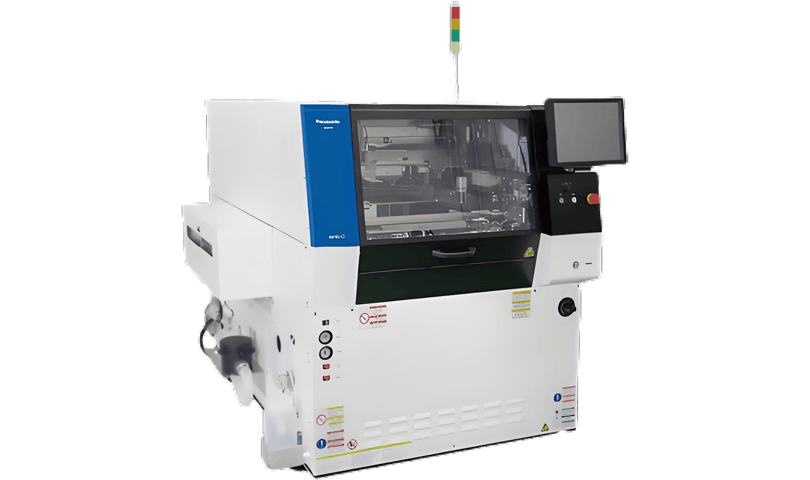
Solder paste printing is the first step in SMT patch processing,and the main purpose is to accurately apply the appropriate amount of solder paste on the placement points of electronic components (SMD) and circuit boards (Pad) for subsequent processing such as reflow soldering,However, how to accurately apply the appropriate amount of solder paste becomes a problem in this link. In order to solve this problem,Jeenoce specially introduced top three solder paste printers into its SMT production line solution to enhance overall production efficiency and yield rates.
Template Design Issues
To solve the problem of the template itself, the problem of the PCB board fitted with it, because the layout and weight distribution of components on the PCB board are uneven, which may lead to the deformation or partial suspension of the PCB board during printing, and the PCB is not fitted to the template is likely to lead to the deviation of the amount of solder paste deposition.
PCB Support Issues
After resolving stencil-related issues, the next focus is the PCB positioned beneath the stencil on the printer’s platform.
Irregular component placement or uneven weight distribution on the PCB can cause deformation or misalignment during printing, resulting in inadequate contact with the stencil and inconsistent solder paste application.
Solder Paste Environmental Issues
Solder paste is a sticky adhesive that binds metal powder and flux together. Under poor temperature and humidity control, it will become dry or runny, making it unfit for normal use.
Alignment Accuracy
The main reason is whether the fit of template and PCB board is accurate enough. The misplaced fit directly leads to the wrong position of solder paste printing. General solder paste printing machine may have such a problem.
Scraper Settings
The coordinated setting of the speed,angle and pressure of the scraper will directly affect the residue of the solder paste, insufficient or accelerate the wear of the template and the scraper itself.Over time,not only the quality of the product is getting worse,but also the cost increase caused by excessive damage is unacceptable to the customer.
Template Separation Speed
If the template is separated too fast, the solder paste cannot completely fall off from the template opening to the PCB pad,Moreover,a certain amount of solder paste residue will form a "Tailing phenomenon" similar to a dog's tail because the entire printing action is not completed, which may lead to bridging problems.
Reserved Redundancy Distance
The scraper processing route is not just to reach the last opening of the part to be printed, but to set a certain redundancy distance to ensure the printing quality of the last part.
Gap Coping Issues
Although the PCB circuit board and template are perfectly fitted, there will be some pits or gaps between them because of the design,the printing influence of fine pitch components (QFP) is very large,and it is easy to cause bridge problems because of solder paste leakage.
Stamp Cleaning Treatment
The template is a module that directly contacts the circuit board and solder paste, however accurate the coating process is,with the accumulation of printing times,there will always be stains such as solder paste and flux remaining on the template,long-term non-treatment may lead to surface fouling and blockage of conveyor holes and ultimately affect production.
Small batch (new product research and development and other scenarios) daily output of less than 500 pieces, and a variety of categories need to switch frequently can consider manual or semi-automatic printing machine.
Medium and high mass production (such as standard electronic production line), the daily output of thousands to tens of thousands of pieces, usually requires less variety switching, this time to choose the introduction of the international North of the high-end automatic printing machine is more appropriate.
For the conventional components,such as 0402 and above low-density pads can be used with semi-automatic or ordinary automatic printing presses, but for 01005 such as 0.3mm or less fine pitch QFP (" quad flat package ", Is a common integrated circuit (IC) packaging form) and BGA, CSP such high-density packaging pads must also use high-end automatic printing press.
In fact,the selection of output,components and pads has determined 80% of the reference recommendations,However,some special cases that also need go to the high-end automatic printing machine and even add some additional changes for the automatic printing machine,for example,some flexible material circuit boards need support,super-sized circuit boards need customized bases,and ultra-high cleanliness medical electronics and aerospace fields have special requirements for dust and anti-static.
Efficiency assurance | |
Stencil Exchange Device | Support Pin Automatic Switching: Provides robust PCB support with automated rapid switching, ideal for multi-batch production with frequent PCB model changes in consumer and automotive electronics. |
Template exchange device | A rear-mounted stencil component box enables recycling, storage, and pre-replacement of stencils, ensuring seamless transitions and enhanced production line efficiency. |
Solder paste automatic supply device | Sensors monitor and automate batching, eliminating production stoppages caused by manual feeding errors. |
green cleaning technology | Green Cleaning Technology: High-pressure airflow, combined with scraper and ultrasonic vibration cleaning, offers a safer, more efficient alternative to traditional chemical cleaning. This process, with fewer steps, is ideal for medical electronics and aerospace applications requiring high cleanliness. |
Prevention System | By implementing closed-loop management with 'data monitoring → anomaly alerts → targeted maintenance,' we address key issues with traditional equipment, such as unexpected failures, reactive maintenance, and inefficiency. |
High quality assurance | |
Variable scraper module | Dynamically adjusts the squeegee angle from 45° to 70° during printing, saving time and eliminating manual adjustments. |
High-Fill Squeegee | The curved squeegee head ensures closer contact with the stencil, efficiently pressing solder paste into apertures for improved filling and density. |
Material Verification Module | By checking the screen, squeegee, support block, and solder paste, you can prevent misalignment of materials and stop production immediately when errors are detected, thereby avoiding secondary processing. |
Solder Paste Viscosity Feedback Module | Adjusts stirring parameters based on measured solder paste viscosity to maintain optimal consistency for printing. |
Stencil Tension Feedback Module | Before the printing process begins, the tension of the screen (a template used to carry and transfer materials such as solder paste and ink) is checked, and then the speed, angle, and force of the screen removal are ensured to be smooth based on the measured data. |
Solvent Discharge Feedback Module | Detect the amount of wet cleaning solvent used to ensure that there is no residue that affects subsequent processes while maintaining cleaning effectiveness. |
According to the above measures,high precision operation of various indicators can be maintained under the condition of efficient printing. The reason why the solder paste printing function introduced by Jinoz is called solder paste printing system is that the printing optimization control module is introduced, which can adjust the parameters of solder paste printing according to the detection effect of solder paste testing equipment (SPI) to continuously impact higher indicators.
PS: The solder paste printer is introduced by Jeenoce is like a high-end sports car,all the functions are optional,that is to say,the above functions are the effect of configuration, on the one hand,to avoid unnecessary cost investment for customers, on the other hand, it can also meet the strict requirements of military industry, aerospace, automotive electronics, medical electronics and other sophisticated fields.
The main purpose of solder paste printing is to provide uniform solder paste coating with high position and thickness for the welding process of electronic components (SMD) and PCB. It is also an indispensable part of all SMT patch processing lines,as long as it involves the welding process in the electronic field, it is inseparable from solder paste printing, and with the development of components and PCB circuit boards in the electronic industry to miniaturization, precision and complexity, the difficulty of solder paste printing basically rises exponentially.
Substrate dimensions | L50mm x W50mm to L510mm x W510mm |
Printing time | 12 seconds (based on a substrate size of L250mm x W150mm) |
Repeat positioning accuracy | 2Cpk ±3.8 μm ±3σ |
Stencil Frame Dimensions | 736mm x 736mm, 750mm x 750mm, 650mm x 550mm, 600mm x 550mm 550mm x 650mm, 584mm x 584mm, 736mm x 584mm, 584mm x 736mm |
Micron printing process to meet the difficulties of micro components and high density pad welding
Multiple closed-loop feedback modules effectively monitor and control key parameters such as paste quantity deviation and offset
Suitable for printing of various kinds and difficult narrow gap components and special PCB pads
Precise control of solder paste usage and prompt solder paste replenishment in advance
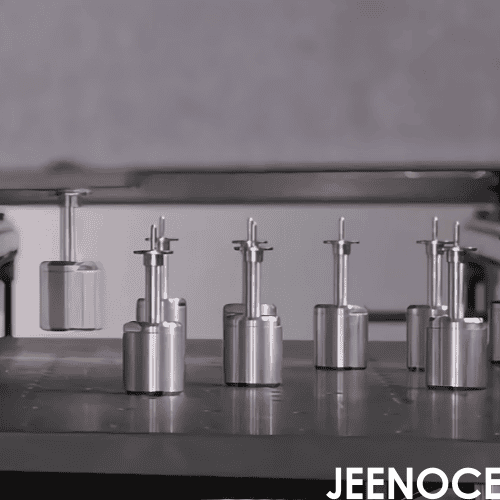
Adapt to multi-batch and multi-model PCB production scenarios to reduce downtime and replacement time
Integrated recovery, storage, and replacement enhance overall production efficiency
Eliminate manual loading errors and reduces rework and waste caused by loading errors
More streamlined and efficient than traditional chemical cleaning, with no post-treatment processes
The prevention system avoids sudden failure downtime and reduces unplanned downtime
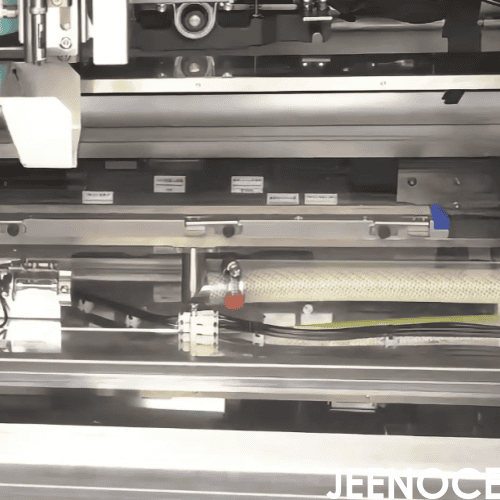
Suitable for various sizes of PCB board to meet the needs of diversified sizes
Compatible with Rigid PCB, flexible board (FPC), Rigid-Flex board, etc
Quick and stable operation for large batch,small batch production simple debugging
Widely used in different fields such as consumer electronics, automotive electronics and medical electronics
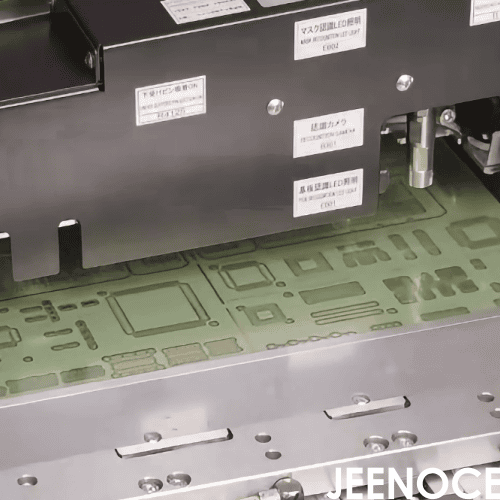
Seamless integration of SMT production process with placement machine, SPI, reflow soldering and other equipment
Through the data of the subsequent SPI equipment reverse correct the printing process index
Minimization of waiting and switching time between processes to maximize production efficiency
Integration with MES systems ensures traceability,optimization,and improve the whole process of printing flexibility production
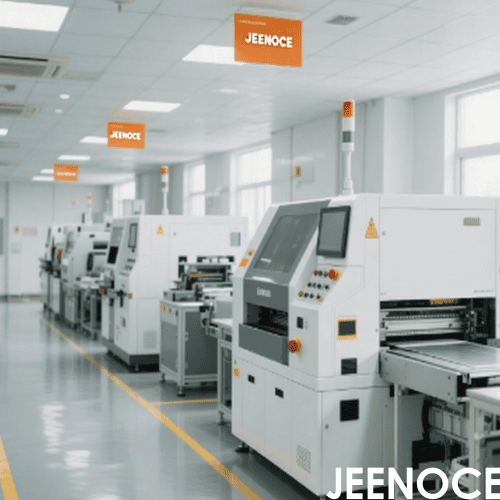

Message
